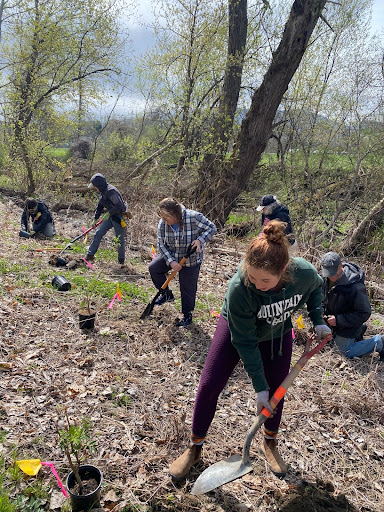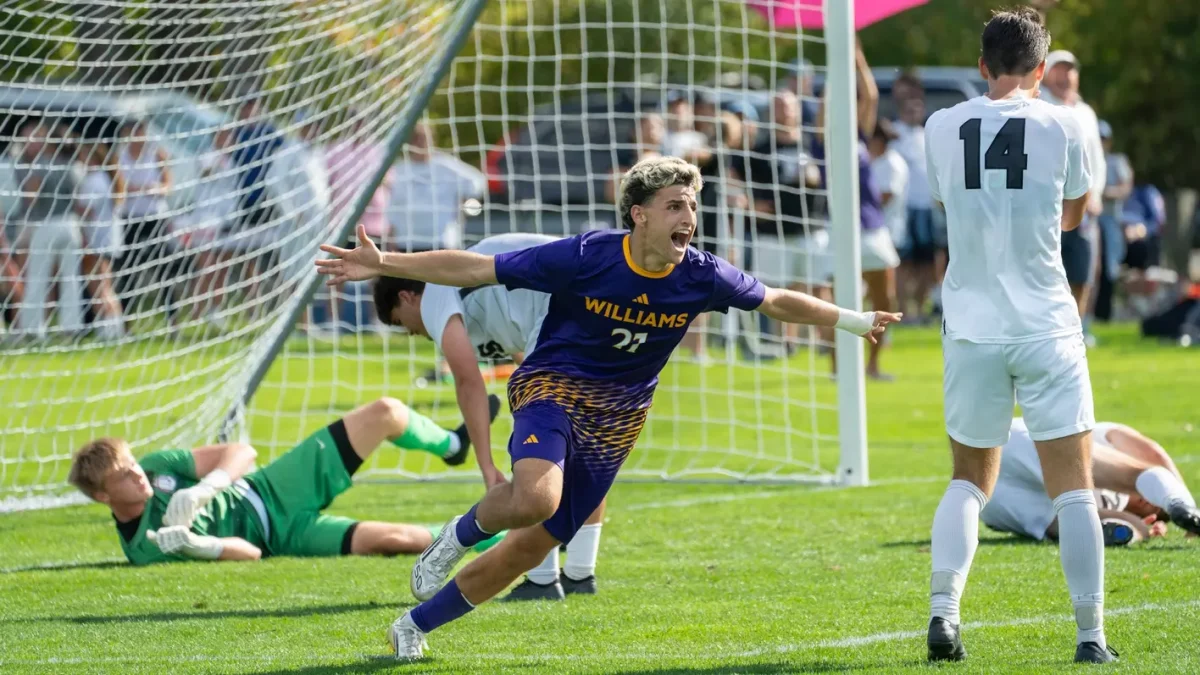Community members plant trees at Hoosic River for habitat restoration
April 26, 2023

On Saturday morning, 13 members of the College and Town communities met at Cole Field, equipped with shovels, buckets, gloves, and saplings. The group planted 53 native plants — 25 trees and 28 shrubs — along the new bike path and the Hoosic River in order to restore the riparian habitat, which is the zone at the edge of a body of water.
The Woodlands Partnership organized the event, which received grant funding from the US Forest Service and the Massachusetts Office of Energy and Environmental Affairs. The tree-planting was part of a follow-up to a project on regional riparian habitat restoration by graduate students at the Conway School of Landscape Design in Conway, Mass.
The group that planted on Saturday was instructed by Professor of Biology and Environmental Studies, Emeritus Henry Art, who chairs the Woodlands Partnership of Northwest Massachusetts, and Lisa Hayden, who serves as director of outreach and engagement at the New England Forestry Foundation. After learning how to effectively plant the trees and shrubs, the group traveled to the river to get to work in its pre-designated locations.
The event focused on the area around the Hoosic River in an effort to recreate a healthy habitat following the recent construction of the bike path. “Planting these trees and shrubs should help restore the disturbed site, impede the spread of invasive exotic weedy species, help further sequester carbon dioxide as they grow, and, importantly, restore more shade to the Hoosic River and decrease the temperature of surface waters there,” Art wrote in an email to the Record.
The trees and shrubs — which included red maple, sycamore, black gum, silver maple, American hazelnut, tulip tree, speckled alder, elderberry, sweetgale, steeplebush, and highbush blueberry — were chosen because they are native to the region and able to survive along the banks of the Hoosic for years to come. “Planting native species will also help to stabilize the riverbanks in this area where the bike path was established against flooding and erosion during storms,” Hayden wrote in an email to the Record.
“The species were chosen because they are well-adapted to both periodically being flooded and because they are likely to fare well in this era of rapid climate change,” Art wrote. “All are native and should easily become established at the sites in which they were planted. Many of the species planted will eventually bear fruits that are important to birds and wildlife species.”
Anne O’Connor ’86 heard about the event from Williamstown’s Director of Community Development Andrew Groff. The prospect of celebrating Earth Day by helping the planet and her community excited O’Connor. “We are seeing a lot of invasive species as we’re doing this planting,” she said. “I’m hoping that what we’re putting in — which are native species and really good for plants, pollinators, and wildlife in this area — pushes back a bit against the invasive species.”
Art considered the event a success, but he emphasized that the true value of the habitat restoration has yet to be realized. “The ultimate success will be in the full establishment of the plantings, the positive effect that they have on the forests along the Hoosic River, and the people who are enjoying the recreational trail,” he wrote.








